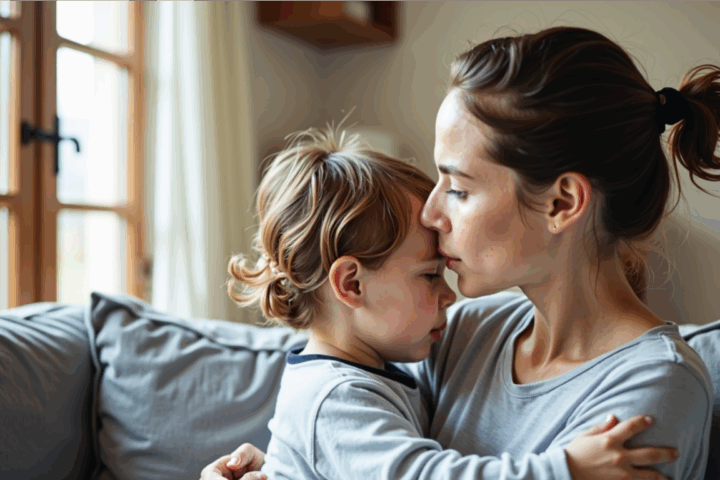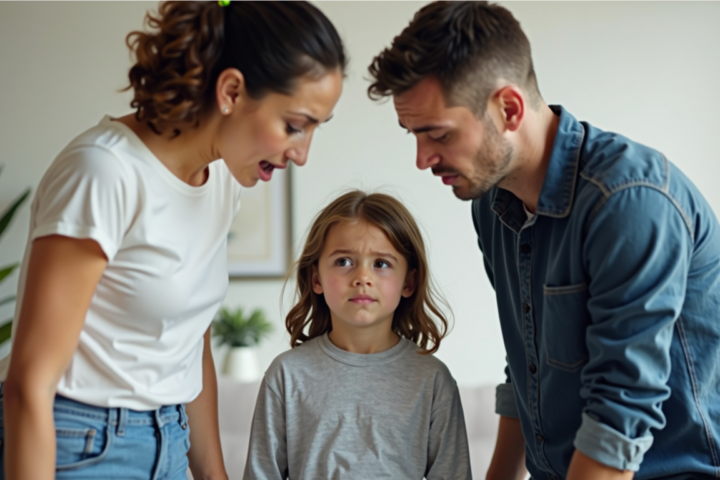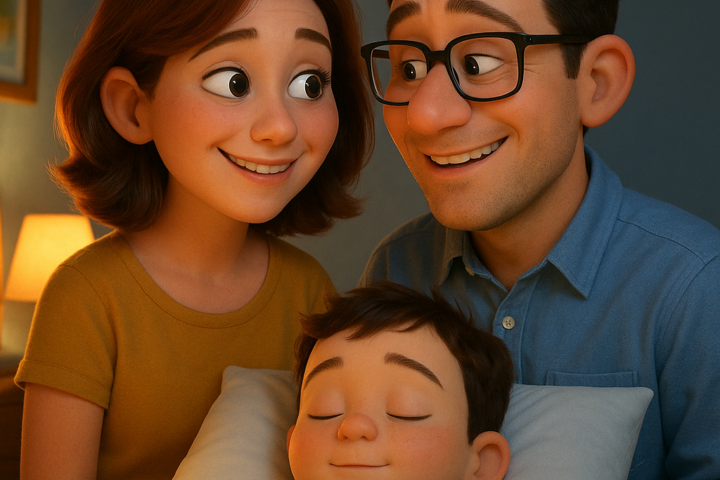Childhood Isn’t Always a Soft Landing
Childhood is often imagined as a season of softness—sticky fingers, scraped knees, and wide-eyed wonder. But what happens when the story is different? When your nervous system learned to brace instead of trust? When connection was paired with confusion or pain?
If you’re nodding quietly, this post is for you.
Because the truth is, unhealed childhood trauma doesn’t stay in the past. It travels—disguised as emotional avoidance, fear of intimacy, or that sinking feeling when someone gets “too close.” And unless we pause and unpack it, those childhood wounds will keep shaping our relationships, often in ways we don’t realize.
The Invisible Backpack We Carry
Imagine your younger self, walking through life collecting moments—some beautiful, others bruising. Over time, those painful experiences begin to gather in what I like to call an “invisible backpack.” You carry it into every conversation, every relationship, every goodbye that feels sharper than it should.
Neglect. Bullying. Emotional invalidation. Loss. Parentification. Abuse.
Each event has a stone in the bag.
You grow up. You get good at performing okay-ness. But somewhere deep in your body—your nervous system remembers. And often, it remembers in the form of avoidance.
Why Childhood Trauma Turns Into Emotional Avoidance
Let’s slow this down.
Why does a part of you pull away when intimacy gets real?
Why does your chest tighten when someone says, “I need you”?
It’s not because you’re cold. It’s not because you’re broken. It’s because somewhere along the way, your nervous system learned that closeness isn’t safe.
Here’s why that happens:
1. Self-Protection Mode Gets Stuck On
When you’re small and overwhelmed, your brain builds walls to keep you emotionally safe. These walls—formed out of dissociation, perfectionism, over-functioning, or shutting down—don’t just disappear when you grow up. They become your default defense, especially in relationships.
“That’s a protective part of you—not a flaw.”
2. Fear of Rejection or Abandonment
Love may have felt like a gamble if caregivers were inconsistent, dismissive, or neglectful. You learned to expect disconnection, not dependability. So now? You might avoid emotional risk entirely because rejection feels like a return to powerlessness.
“What if this fear belongs to a younger part of you?”
3. Insecure Attachment Patterns
Early relationships shape the blueprint for how we connect. If that blueprint is rooted in unpredictability, your adult relationships may echo those same chaotic dynamics—hot and cold intimacy, anxious pursuit, or complete withdrawal.
Recognizing the Signs of Childhood Trauma: Is Emotional Avoidance Showing Up?
Here are a few patterns you might recognize:
-
You emotionally shut down or withdraw during conflict.
-
Expressing needs feels unsafe, dramatic, or “too much.”
-
You fear vulnerability because it might lead to being hurt or abandoned.
-
You feel overwhelmed when others rely on you emotionally.
-
You avoid “heavy” conversations and favor surface-level connection.
-
You often think, “I’m better off alone.”
Let’s be clear: these aren’t flaws. They’re adaptations. Brilliant, body-level strategies your system developed to survive.
But survival isn’t the same as connection. And healing means learning new strategies—ones that let you feel safe enough to let love in.
Healing the Wound of Childhood Trauma: Practical Steps Toward Change
There’s no “quick fix” for trauma—but there is a path. And it’s paved not with perfection but with consistent compassion, curiosity, and co-regulation.
1. Name What Happened—Without Shame
Before healing can begin, we need to acknowledge the root.
This doesn’t mean blaming your caregivers or staying stuck in the past. It means saying, “Something happened that impacted how I show up in relationships.”
Naming it gives shape to the invisible.
“It’s not about being ‘too sensitive.’ It’s about unmet needs.”
2. Seek a Safe, Regulated Relationship (Therapeutic or Otherwise)
Healing doesn’t happen in isolation. The nervous system repairs best through safe, attuned connection.
Whether it’s with a therapist trained in attachment trauma, a trauma-informed coach, or a deeply present friend, you need someone who can hold space without judgment.
Consider looking for professionals trained in:
-
Internal Family Systems (IFS)
-
Somatic Experiencing
-
EMDR (Eye Movement Desensitization and Reprocessing)
-
Polyvagal-informed therapy
📚 Helpful resource: The Body Keeps the Score – Bessel van der Kolk
3. Practice Mindfulness & Body Awareness
When your system is in fight, flight, freeze, or fawn, it’s hard to choose connection over protection. Practicing grounding techniques helps rewire your response.
Try:
-
Box breathing (inhale 4, hold 4, exhale 4, hold 4)
-
Orienting (gently name 5 things you can see)
-
Vagus nerve stimulation (humming, gargling, cold face splashes)
“This isn’t logic—it’s survival physiology.”
4. Challenge Avoidance with Micro-Moments of Intimacy
You don’t have to go from avoidant to open overnight. Start with small steps:
-
Text someone, “I was thinking of you.”
-
Share a memory that made you smile.
-
Ask for a hug, even if it feels awkward.
Your protector part might panic—but your inner child will feel seen.
5. Rewrite the Story with Self-Compassion
This is where deep healing happens.
Instead of, “Why am I like this?” try asking, “What part of me is afraid right now?”
Talk to yourself like you would a little one who’s scared. Validate. Reassure. Stay present.
“Your protector acts like a bodyguard who doesn’t realize the threat has passed.”
You Deserve More Than Survival
There’s something brave and beautiful about recognizing your patterns resulting from childhood trauma and choosing to break the cycle. That’s the real legacy—the one you get to write now.
And while your past might whisper that connection isn’t safe, your healing will speak louder.
You deserve relationships that feel spacious and soft. Ones that don’t require you to abandon yourself to be loved. Ones where you can breathe, speak, and be met.
So, if any part of you is aching for change—don’t ignore it. Listen to it.
Let that ache become your invitation.
Ready to Begin?
If this post stirred something in you—a knowing, a memory, a nudge—know that you don’t have to navigate this journey alone.
✨ Schedule a free consultation today to explore healing attachment wounds and stepping into relational safety. This work is sacred—and so are you.
Let’s Ripple This Forward
If this post resonated, consider sharing it with someone who might be carrying their own invisible backpack.
Let’s create a ripple effect of emotional literacy, healing, and hope.
Because emotional avoidance isn’t a life sentence, it’s a symptom. And symptoms can change when safety enters the room.











